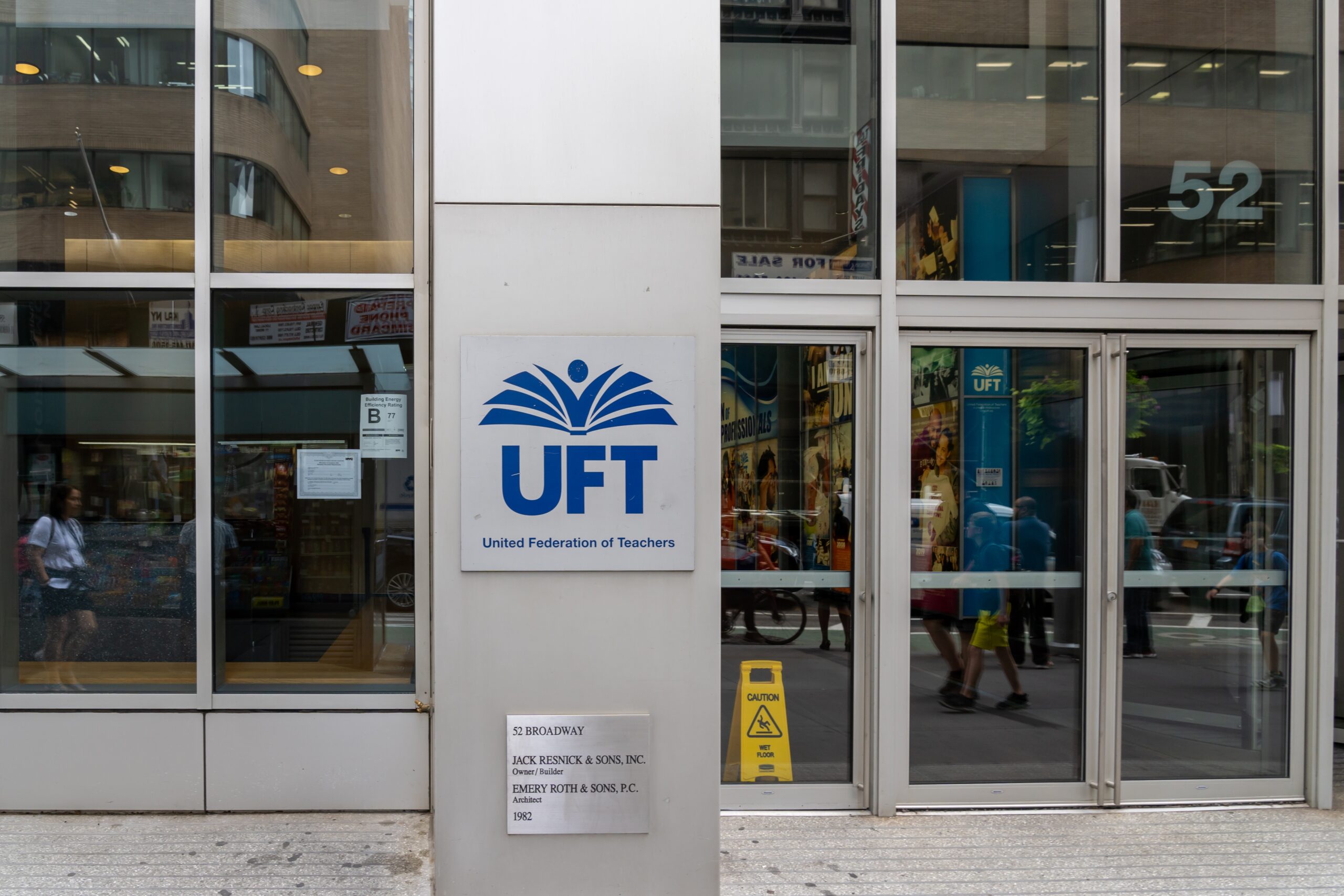Teachers and their students are largely caught in the middle of the contentious power struggle between two political giants—NYC Mayor Eric Adams and United Federation of Teachers (UFT) President Michael Mulgrew.
Last legislative session, the UFT lobbied heavily for key policies that the New York General Assembly passed, and Gov. Kathy Hochul signed.
Among those policies were Assembly Bill A6328A and Senate Bill S9460. SB 9460 placed a mandatory limitation on the number of students per teacher—which will predominantly benefit wealthier areas.
According to an analysis from the city’s Independent Budget Office (IBO), the law will require at least an additional 17,700 new teachers by 2027—when the law takes full effect. Officials have tried to warn of the law’s cost tradeoffs, namely that because the city’s highest-poverty schools already have smaller classes, they stand to benefit the least from the state’s class size cap. This means that funding will benefit wealthier areas, as opposed to the highest-poverty areas.
Assembly Bill A6328A, also supported by UFT, codified migrants as a protected class, extending the right to a free education for every resident between the ages of 5 to 21, regardless of citizenship status.
Since the new laws have passed, it’s estimated that 53,000 new migrant students have enrolled into public schools, 85% of which are non-English speaking.
The sharp increase in student enrollment numbers caused by an increased migrant population, coupled with the new class size cap, is expected to strain teacher capacity and budgets, especially in districts already facing teacher shortages.
Critics, such as Adams and Schools Chancellor David Banks, have called the policy a $2 billion “unfunded mandate,” in the face of the migrant crisis.
Tensions hit critical mass, however, when, using “mayoral control,” Mayor Eric Adams attempted to reorganize the 2024-2025 fiscal year budget to ensure funding went to migrant students and teachers in the highest-poverty areas.
In response, the UFT filed a lawsuit on December 21, 2023, alleging that Mayor Adams had violated the New York State Education law, and the New York State Constitution in his budget.
The filing claims budget reallocations toward the migrant crisis create cuts to education that “supplant rather than supplement” the city’s portion of the education budget.
In total, UFT states that the mayor’s budget would cut $2 billion over the next two years impacting “DOE funded positions,” among other things like; Universal Pre-K, after-school and summer school programs, computer science programs, and community schools.
Citing a 2002 revised statute, counsel for the UFT claims that Mayor Adams violated the “maintenance of effort” provision which
“prohibits the City from reducing spending in its schools from the level provided in the preceding year unless overall City revenues decline. In that event, the amount of City funds for school could only be reduced by an amount not more than the annual percentage decrease in overall City funds.”
Ultimately, New York City tax increases resulted in $7.85 billion more in revenue than initially projected in the FY 2023 Adopted Budget. Between tax increases, federal and statewide aid, New York City did not suffer a revenue decline that would justify the city lowering its portion of the education budget.
Still, UFT failed to address the fact that the union supported classroom cap legislation even after the IBO and DOE warned funding tradeoffs would be unavoidable.
Now, UFT and the City face a worsened teacher shortage in middle and high school math, science, English, Spanish, bilingual and special-ed classes.
Even if teachers are brought in from other states, it’s well documented that the highest-poverty schools will be least likely to benefit under the current law—leaving many to question if Mulgrew’s efforts are about the children, or about adding more members to the UFT.
Regardless of intent, the battle between Adams and Mulgrew exploits the human condition of migrant children and their teachers as political capital, a mere bargaining chip, crushed beneath the weight of two titans–big government and big labor.
